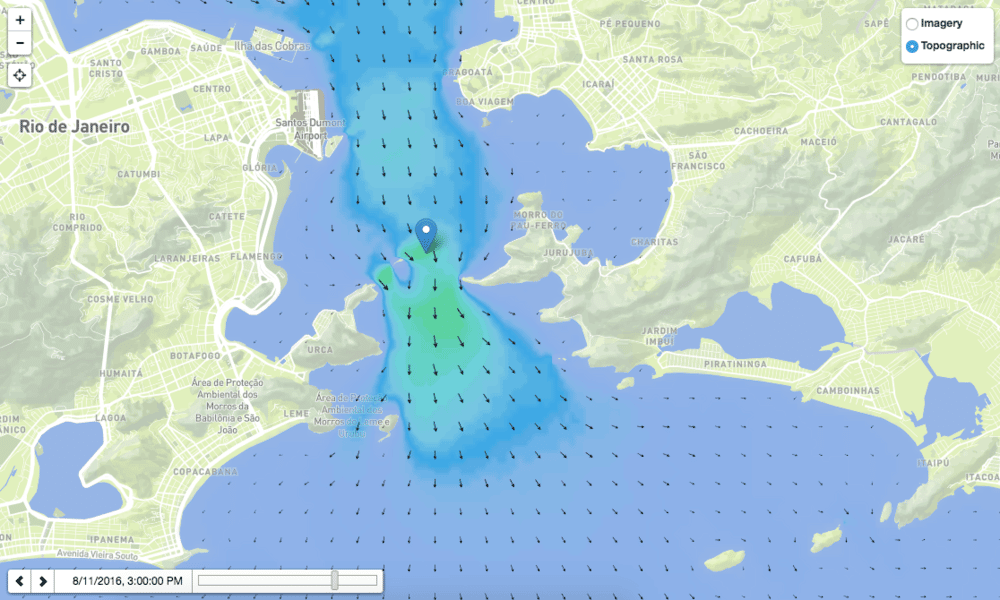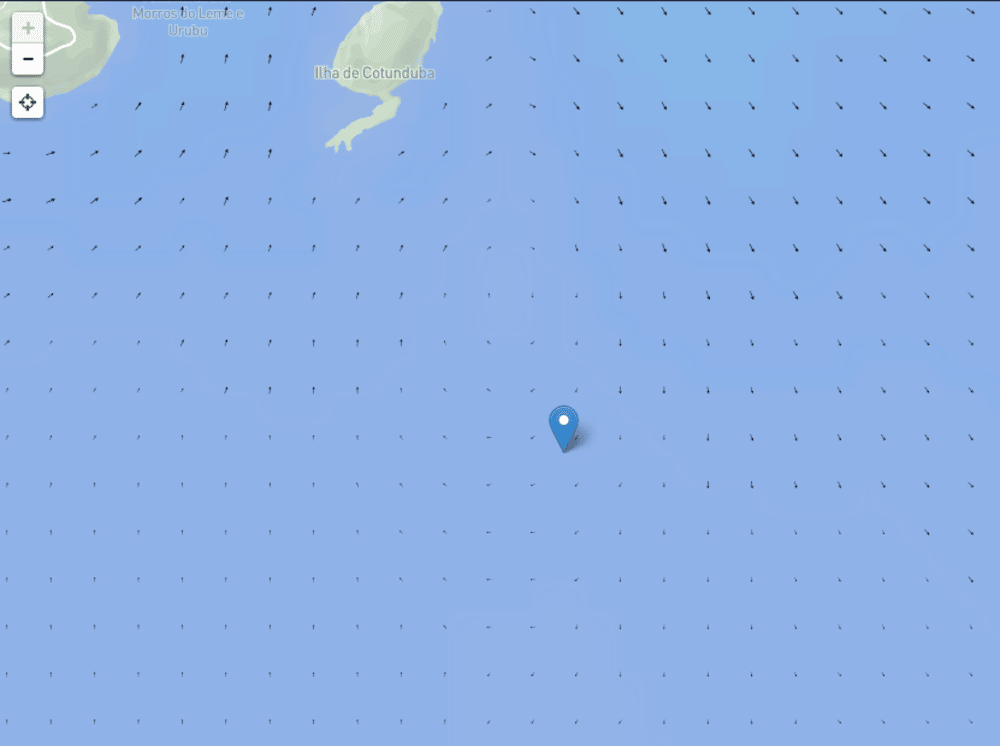
Before the Olympic regatta began in Rio, the teams that had spent their quad training here continuously reiterated the importance of knowing the complex current patterns in Guanabara Bay. However, in the first four full days of racing in Rio, the current has yet to make a significant impact on competition. Instead, it’s the wind that has been the main focus — unpredictable, shifty and ultimately as light as predicted. It’s a game of calling the puffs, not calling the current lines.
Tide maps of Guanabara Bay from 3 pm (mid-race schedule and about an hour after maximum ebb) on Thursday, August 11 show a current of a measly 0.91 knots at the point shown below, which World Sailing’s Malcolm Page identified as the location of the most concentrated current in the bay. Note: Tidetech.org has some great models of the area available to the public.
Without any serious current on the racecourses, the game has been all about staying in the pressure and calling shifts, something the leaders have been excelling in. However, that all could change over the next couple of days. American 470 sailor Briana Provancha points out that Rio is currently in a neap tide, and the moon is building to full, so the current is going to become more of a factor over the next days of racing and certainly through the medal events.
The first inklings that the current is starting to build back up and create an even bigger tactical challenge appeared on the Copacabana course yesterday, where Australian Finn sailor Jake Lilley described the course as “one sided.” The weak ebbing tide created an adverse current on one side of the course. “You basically had to sail from one corner to the top mark,” says Lilley. “It made it a grind to the top…it was just a drag race.”

On Friday, the Laser and Laser Radial are slated to sail on the Copacabana course, where Lilley says he saw the first current variations of the week.
The skiffs finally get their turn on the water for their first day of racing in Rio, scheduled for the Pao de Acucar and Ponte courses. On the men’s side, Australians Nathan Outteridge and Iain Jensen and New Zeleand’s Peter Burling and Blair Tuke are heavily favored for gold and silver, but they’ll be duking it out over the regatta for that top position. For anyone else in the fleet, it’ll be a feat to get ahead of these two teams for the top spot.
The 49er FX will make its Olympic debut tomorrow, with hometown heroes Martine Grael and Kahena Kunze leading the favorites. Being a new class, like the Nacra, almost every team is a contender as a possible medal. The Brazilians have performed the most consistently at the top of the fleet in championships and events through the quad, but couldn’t pull off a podium finish at the 2016 Worlds. Tamara Echegoyen and Berta Bentanzos, from Spain, will look to build on that title here in Rio.
Racing starts at 1300 local time and live tracking is available on World Sailing’s Olympic website.








